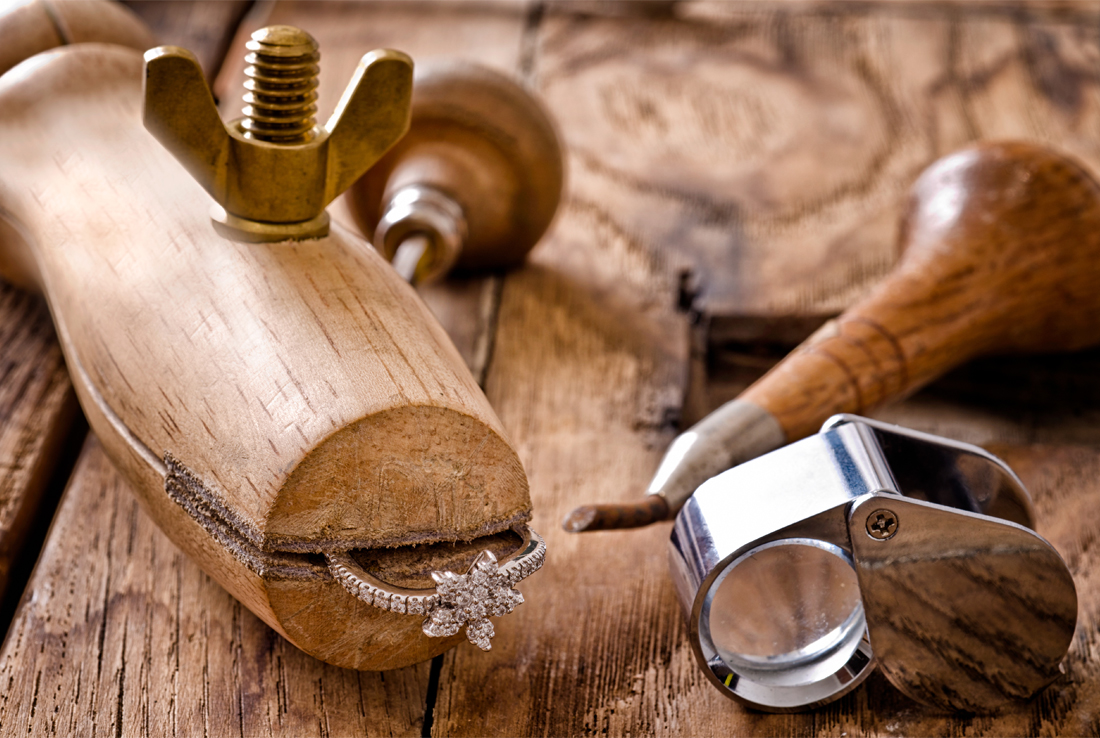Proper maintenance will retain the value, luster and wear of your jewelry. Over time, jewelry will start to lose its shine, and it will be necessary to clean it and to check certain components that may be in need of repair. This will avert any future loss or damage of jewelry.
It is necessary to check the claws/prongs, links, fasteners, and stones once a year to make sure the structure of the jewelry is properly maintained. This is especially true for jewelry containing expensive stones. For instance, a few loose or worn claws can cause one or more of the stones to fall out.
Although platinum is a wear-resistant metal, it’s a very white metal that will require professional polishing to keep its shine. It is necessary to bring platinum jewelry to a professional jeweler for polishing because it involves several finishing and polishing processes to abrade this very dense metal. When platinum is polished professionally, it will revert to its original brilliance.
Polishing yellow gold is necessary for it to retain its original glow. It’s not a very expensive process, and it is well worth the trouble of removing small scratches and spots that tend to tarnish over time. Once yellow gold is polished, it looks like a brand new piece of jewelry.
Many people think white gold is a natural occurrence, but it is not. Additives are placed in the melted metal before casting to cause yellow gold to turn to white. Unfortunately, over time, these additives tend to dull, and white gold will lose its brightness. It must be professionally polished once every year or two in order to retain its beauty. Most white gold pieces are coated with a layer of rhodium to give it an extra shine. Aside from the yearly regimen of polishing, it will be necessary to get a fresh coat of rhodium to maintain the look.
When a repair is needed, it is important to take care of it as soon as possible. Wearing jewelry without making needed repairs can cause undue damage or loss. For instance, forcing a clasp to close when it is no longer fitting properly can result in the loss of a bracelet or necklace. Even if the piece is not lost, jewelry components can be bent in such a way that they can no longer be repaired. This may very well result in having to replace the damaged component, which can cost hundreds of dollars compared to just a few dollars in repair costs. Because the latter is the more frugal approach, it’s advisable to repair all jewelry with broken or improperly functioning components.
Much of the value of jewelry is in its craftsmanship. The intricacy of a design is often marred by misuse or neglect. Taking the right steps toward maintenance and repair can go a long way toward maintaining the beauty and value of fine jewelry. If the right procedures are followed, jewelry can last for more than a lifetime.



